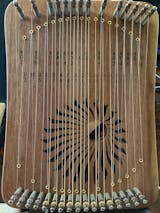Singing bowls have a rich and fascinating history that spans centuries and continents. Originating from ancient cultures across Asia, singing bowls have been used for various purposes, including meditation, spiritual rituals, and healing practices. In this blog post, we'll delve into the origins and history of singing bowls to uncover their cultural significance and evolution over time.
Origins in Ancient Cultures:
- The exact origins of singing bowls are shrouded in mystery, but they are believed to have originated in regions such as Tibet, Nepal and India.
- Tibetan singing bowls, also known as Himalayan singing bowls, have a long history in Tibetan Buddhism and are often used in meditation and ceremonial practices.
Cultural Significance:
- Singing bowls hold significant cultural and spiritual importance in the regions where they originated. They are often considered sacred objects and are used in religious ceremonies, rituals, and festivals.
- In Tibetan Buddhism, singing bowls are used to accompany chanting, meditation, and prayer. They are believed to evoke spiritual energies and facilitate a deeper connection to the divine.
Evolution Over Time:
- Singing bowls have evolved over the centuries, with changes in materials, designs, and manufacturing techniques.
- Traditional singing bowls were typically made of metal alloys, such as bronze or brass, and were handcrafted using ancient techniques passed down through generations.
- In recent years, crystal singing bowls have become popular alternatives to traditional metal bowls. These bowls are made from quartz crystal and are prized for their clarity of tone and purity of sound.
- Singing bowls gained popularity in the West during the 20th century, thanks to increased interest in Eastern spirituality, meditation, and alternative healing practices.
- Today, singing bowls can be found in yoga studios, meditation centers, and wellness spas around the world. They are used by practitioners of various spiritual traditions and holistic modalities.
Modern Applications:
- In addition to their traditional uses, singing bowls are also used in modern therapeutic settings, such as sound healing, music therapy, and relaxation techniques.
- The vibrations and resonance produced by singing bowls are believed to have a range of therapeutic benefits, including reducing stress, promoting relaxation, and restoring balance to the body and mind.








